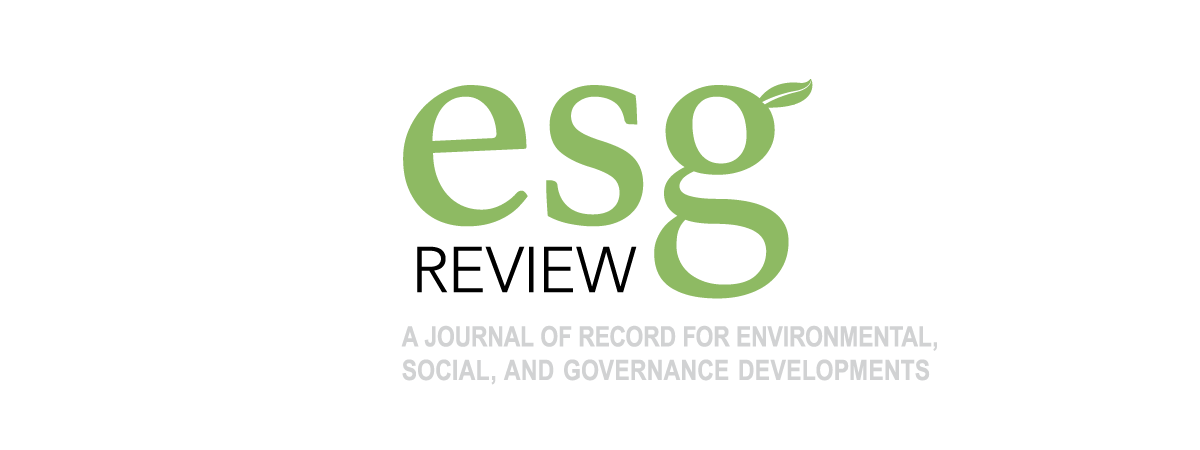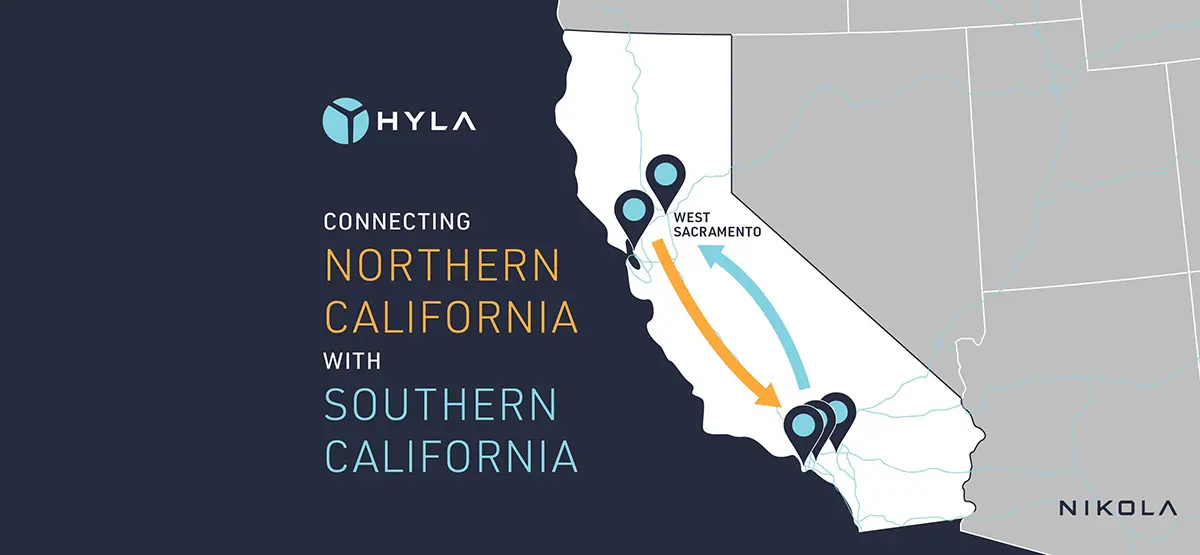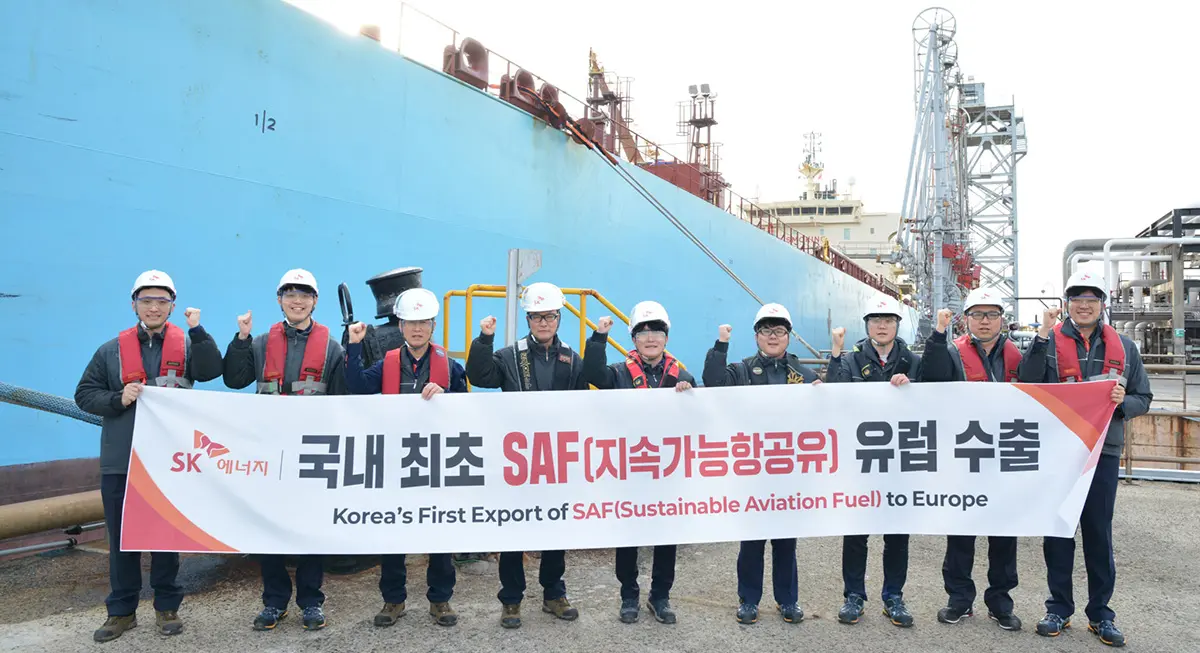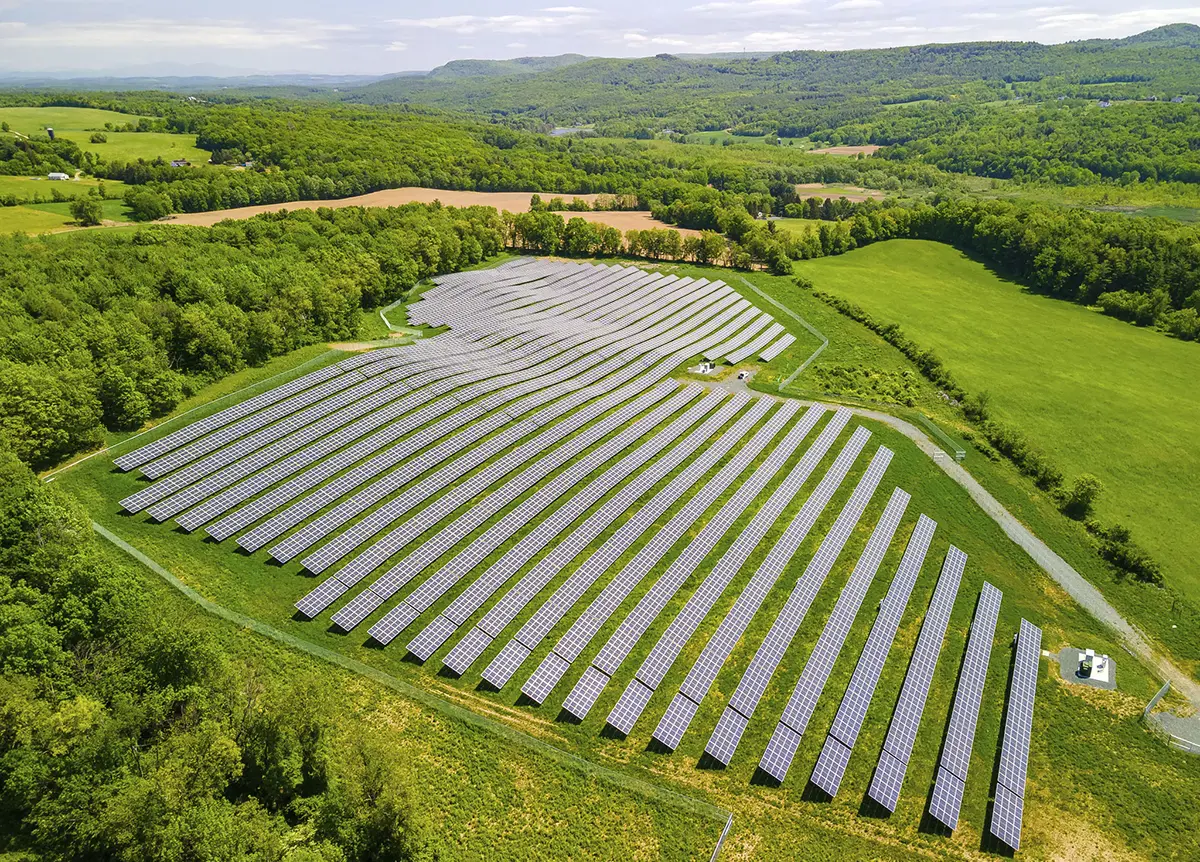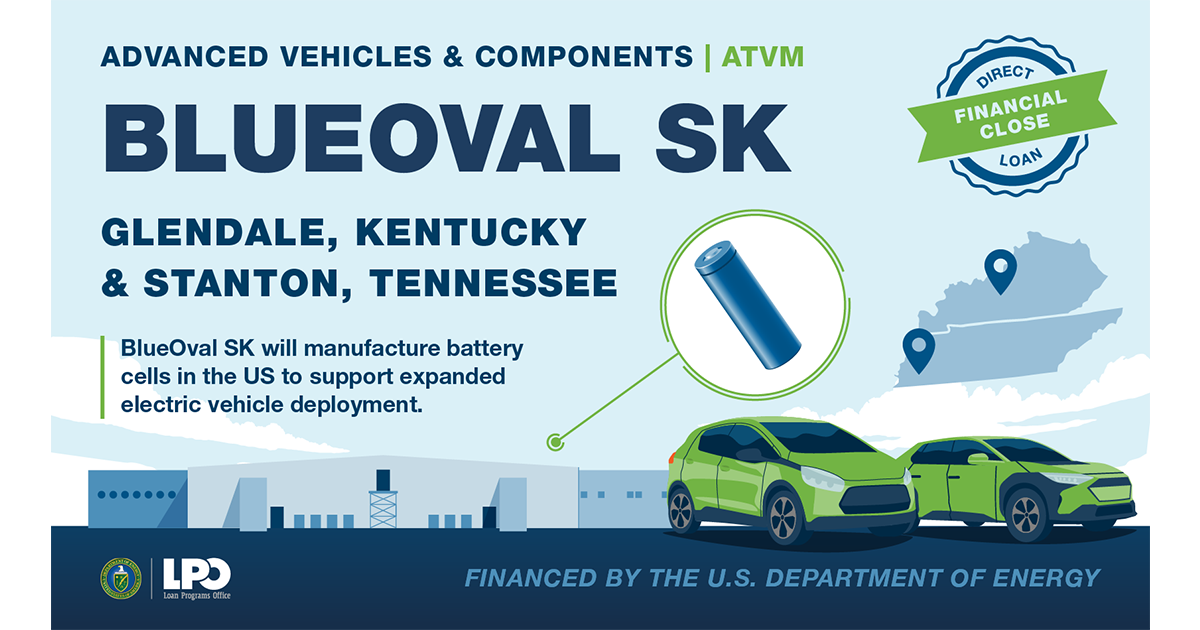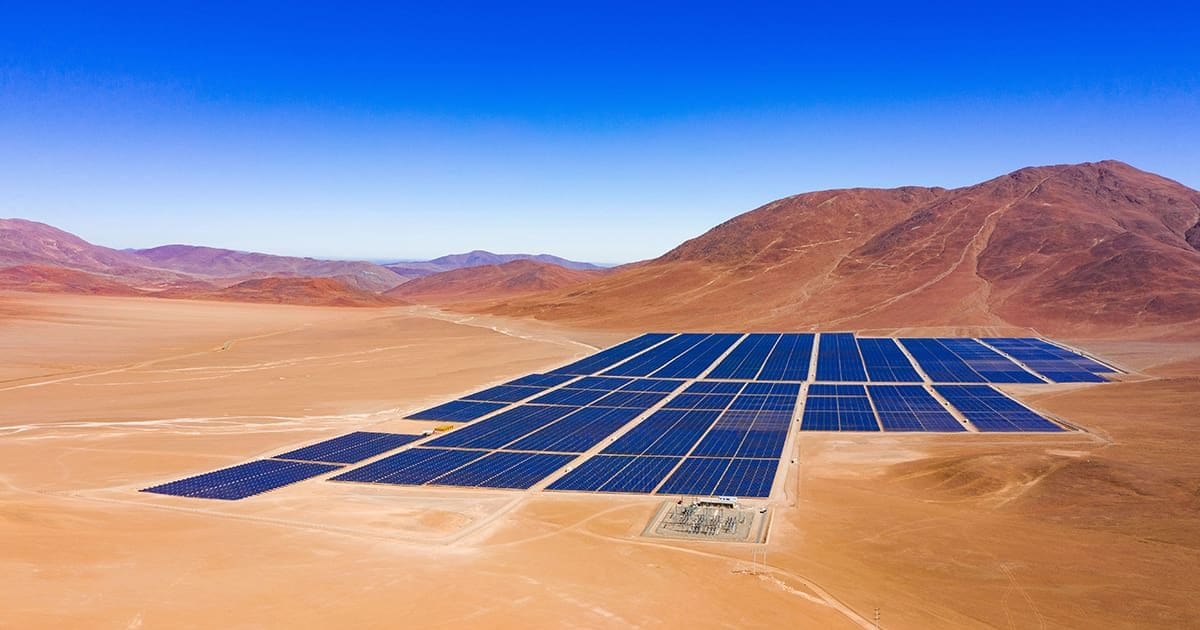
The Role Of Carbon Credits In California’s RNG Market

This article was written by Daryl Maas.
Maas Energy Works (MEW) is a developer of farm-based renewable natural gas (RNG) facilities. The company designs, fabricates, and installs gas plants to turn raw biogas into pipeline-quality RNG. The company completed its first California dairy digester in May 2013. To date, the company has 68 operating digesters (with another 61 in development) across California, Idaho, Texas, Nebraska, and Arizona.
Specializing in the design and assembly of upgrading equipment for RNG facilities, MEW employs three-stage membrane separation technology from Evonik. Gas separation membranes work on the principle of selective permeation through a membrane surface. The driving force for permeation of the gas through the membrane is the difference between the partial pressures of the gas on the retentate side (the interior of the hollow fiber) and the permeate side (the exterior of the hollow fiber). The three-stage design uses Evonik hollow fiber membranes, which are highly selective for carbon dioxide (CO2) over methane. Methane is retained on the inside (retentate) while CO2 passes through the fiber walls (permeate).
Stages 1 and 2 are in series, which results in a product stream of enriched methane. Stage 3 is a unique addition that takes the CO2-rich Stage 1 permeate and captures any remaining methane. Adjustable backpressure regulators after Stages 2 and 3 allow for fine-tuning of methane purity, recovery, and recycle rate. This system effectively removes gas constituents like CO2, nitrogen, and oxygen, resulting in a methane purity of 98% and a methane recovery rate exceeding 99%. The company can customize equipment to meet specifications of 250 to 700 scfm. With a modularized design, its scalable solution has an installation pad footprint of approximately 4800 sq.ft. (446 m2), accommodating various facility sizes and needs.
A Unique Approach
MEW works with dairy producers to custom design a digester to best fit their needs. The company uses covered lagoon technology, which looks like a large tarp covering a pool of manure. The anaerobic environment of the lagoon is ideal for naturally occurring microbes to break down the organic waste and create greenhouse gases like methane. The raw biogas is then cleaned and upgraded at a MEW facility and injected into a natural gas pipeline.
Biogas captured by digesters can be used to produce vehicle fuels, generate electricity, or be injected into the utility pipeline. A single cow’s manure in a digester can supply the equivalent of 120 gallons (454 liters) of gasoline per year. Put another way, four or five cows can supply enough electricity to power a house. The result is reduced dependence on fossil fuels and other carbon-intensive power sources.
Implementing dairy digesters can offer multiple benefits to dairy farms. First, digesters capture greenhouse gases that would otherwise be emitted into the atmosphere. Methane gas, a significant component of biogas, is approximately 25 times more potent than CO2 in terms of its contribution to global warming. Methane is naturally emitted by stored liquid manure, which farmers are required to keep in ponds during the winter and spread on fields when crops are growing. In this manner, dairy farms are a “closed loop” whereby the farmer feeds crops to the cows, the cows make manure, the manure makes the crops grow, and the crops again feed the cows. The use of digesters introduces another option into this loop — transforming waste into RNG and offering additional income for the producer, jobs for the local community, and stability to the dairy industry, where prices often fluctuate.
Digester projects can generate revenue through various mechanisms that recognize the value of renewable gas, including Low Carbon Fuel Standard (LCFS) credits, Renewable Identification Numbers (RINs), and compressed natural gas (CNG) sales. Typically, MEW sells its biogas for use in the regulated transportation fuel market because that is the highest value for its RNG. However, there are increasingly more voluntary markets where companies, utilities, and other buyers are beginning to procure dairy RNG to meet corporate sustainability goals or comply with other targets based around carbon intensity (CI).
LCFS And RNG
The RNG industry benefits from programs like LCFS that incentivize renewable fuel production. The LCFS is a program managed by the California Air Resources Board (CARB). One key concept in the LCFS is known as “additionality.” The LCFS only awards carbon credits for projects that generate greenhouse gas reductions that improve over the baseline case. There are several tests in the LCFS regulation to determine whether a project is “additional.” One test is that a project must be voluntarily implemented. To the degree a project is simply complying with the law, the LCFS will not award any credits for emissions reductions. For example, California has mandated that nearly all landfills must capture their fugitive methane emissions and burn them off (usually in a flare). The “baseline case” at landfills is that emissions are already destroyed. If a landfill were to instead capture those emissions and make them into biomethane vehicle fuel, as is done on dairy farms, that landfill would not receive credits for reducing methane emissions because the reductions are not additional to the baseline case.
Consequently, landfill gas typically receives a positive LCFS CI score, around 40 grams per megajoule (MJ). Because landfills receive a slightly positive CI score (indicating minimal carbon reductions compared to, say, gasoline fuel) some landfills do not capture biogas for reuse, instead it is flared to comply with regulations.
Distinguishing Between Landfill Emissions And Dairy Emissions
California dairy farms, like most primary agriculture, are not required to capture their methane emissions. Given that every cow, barn, and pond emit methane, the state has not passed a mandatory dairy methane capture regulation. As such, when dairies capture the methane from manure ponds by installing digesters and other technology, the dairy farm is reducing its methane emissions below the baseline case.
The key difference between dairy gas and landfill gas is that dairy methane emission capture is voluntary, whereas a landfill is required by law to capture its fugitive methane emissions. The LCFS program includes these manure methane reductions in the CI score for dairies — yielding a negative CI score, roughly -250 grams per MJ. As a result of this low CI score, dairy farms rarely flare off gas due to its value. Dairy farms invest in the extra equipment to build and operate gas cleanup and injection facilities to supply this gas to the LCFS’s regulated transportation fuels market. To date, farmers have made these investments because the LCFS has provided an incentive to capture dairy biogas. Without that incentive, this could change. It is the specificity of the LCFS CI scoring that provides an incentive to build voluntary gas capture and cleanup systems on dairy farms.
- 95488.9. Special Circumstances for Fuel Pathway Applications
- f) Carbon Intensities that Reflect Avoided Methane Emissions from Dairy and Swine Manure or Organic Waste Diverted from Landfill Disposal.
(1) A fuel pathway that utilizes biomethane from dairy cattle or swine manure digestion may be certified with a CI that reflects the reduction of greenhouse gas emissions achieved by the voluntary capture of methane, provided that:
(A) A biogas control system, or digester, is used to capture biomethane from manure management on dairy cattle and swine farms that would otherwise be vented to the atmosphere as a result of livestock operations from those farms.
(B) The baseline quantity of avoided methane reflected in the CI calculation is additional to any legal requirement for the capture and destruction of biomethane.
(Source: California Office Of Administrative Law)
Accounting For Land Use Change In The LCFS
The LCFS program assigns a CI to each fuel supplied to the California transportation market. In doing so, CARB applies verifiable methodology to calculate how much carbon is in every type of fuel (including dairy biogas). The program often takes more than two years after startup to secure a CARB-approved CI score. These scores consider all the energy and emissions used in the production of a given fuel, such that fuels with low total life cycle emissions receive a low CI score and receive more LCFS carbon credits when they fuel vehicles in California.
In the case of crop-based fuels, CARB makes sure all impacts of the fuel are accounted for in the CI score that it awards. For example, CARB accounts for the land use change (LUC) associated with producing fuel crops on land that could otherwise have been used for something else.
CARB enacts a CI “penalty” on all such fuel pathways, based on the type of fuel and type of feedstock crop. That is, the CI score for these fuels takes into account all emissions and energy usage from the fuel production and adds an additional calculation to quantify the carbon emissions from producing the feedstock crop. The table below is from the current LCFS regulation. The LUC column shows the number of CI points (measured in grams of CO2 per MJ of fuel energy) that are added to the CI score to account for the implied land use change. Note that these penalties are applied automatically for all such fuel types, without the fuel pathway holder having any opportunity to argue otherwise. It is one of the strictest and broadest penalties in the LCFS program, and biofuels producers have frequently protested it. However, CARB is committed to a robust process that errs on the side of understating, rather than overstating, the carbon benefits of a fuel.
Land Use Change Values For Use In CI Determination
| Biofuel | LUC (gCO2/MJ) |
| Corn Ethanol | 19.8 |
| Sugarcane Ethanol | 11.8 |
| Soy Biomass-Based Diesel | 29.1 |
| Canola Biomass-Based Diesel | 14.5 |
| Grain Sorghum Ethanol | 19.4 |
| Palm Biomass-Based Diesel | 71.4 |
(Source: California Office of Administrative Law. Authority cited: Sections 38510, 38530, 38560, 38560.5, 38571, 38580, 39600, 39601, 41510, 41511, and 43018 Health and Safety Code; 42 U.S.C. section 7545, and Western Oil and Gas Ass’n v. Orange County Air Pollution Control District, 14 Cal.3d 411, 121 Cal.Rptr. 249 (1975). Reference: Sections 38501, 38510, 39515, 39516, 38571, 38580, 39000, 39001, 39002, 39003, 39515, 39516, 41510, 41511 and 43000, Health and Safety Code; Section 25000.5, Public Resources Code; and Western Oil and Gas Ass’n v. Orange County Air Pollution Control District, 14 Cal.3d 411, 121 Cal.Rptr. 249 (1975).)
California currently has dairy methane reduction targets in place. In 2016, Senate Bill 1383 required the dairy industry to find a way to voluntarily reduce methane emissions by 40% or face the potential for state regulation of dairy methane. In 2017, California set a target for 40% dairy methane reduction by 2030 from 2016 levels. The dairy industry responded by building up a fleet of digesters to capture these emissions and is on track to achieve the 40% goal voluntarily.
The LCFS is based on current laws as written. Landfills are large, concentrated waste disposal facilities and are required to capture and destroy their methane emissions. Dairy farms, being much smaller and involved in food production, are not. CARB considers actual methane emissions and existing laws and scores a project’s CI accordingly. Consequently, the LCFS model applies a rigorous, transparent, and scientific model to determine the CI of dairy RNG. The CI score could change if laws are promulgated that require dairy farms to reduce their manure methane emissions. But if the regulatory incentive to capture dairy biogas is removed, then the biogas loses its value. Few would invest money to capture and upgrade it.
In most of the world, dairy methane emissions vent into the atmosphere. In California, where the LCFS program puts a market value on those emissions, people invest in the process of capturing and using that gas as fuel. LCFS scoring has been a robust, verifiable program that has helped to make California dairies among the lowest-carbon milk producers in the world.


